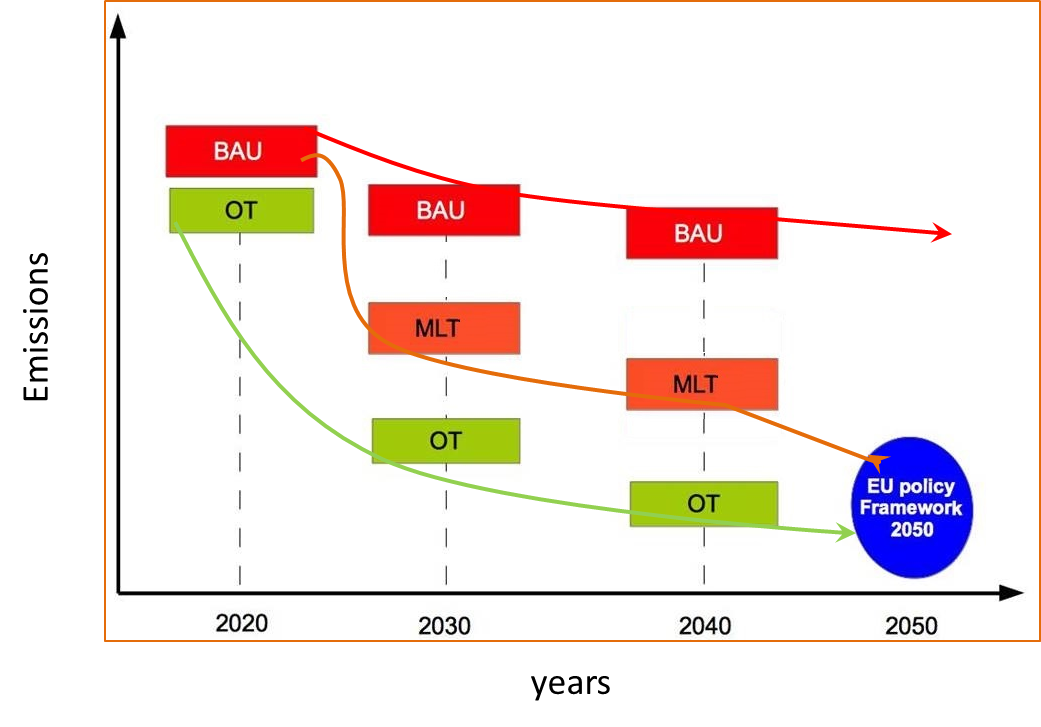Scenarios & pathways
The aim of the Work Package 3 entitled ‘Scenarios and Pathways’ is to explore the condition in which the energy transition could occur and describe the main concepts behind different scenarios and pathways.
First of all, it is very important to underline that scenarios and pathways are not forecasts: they do not inform whether the energy transition will really occur or not, they simply depict the possible paths toward the energy transition, each with its own characteristics and its advantages or disadvantages. After identifying what are the possible ways towards the energy transition, the decision of pursuing one of them or a combination of them is our (political, technological, social) decision.
The ‘Scenarios and Pathways’ identification process may appear complicated, but is not, as it is experienced frequently in everyday life. For example, think about a car navigator. A car navigator is a perfect example of a device which depicts several scenarios and pathways. When using a car navigator, you set a starting point and a final point of your trip (scenario) and the navigator shows you all the possible pathways to reach your goal. Normally the priority to reach the goal is the fastest way. The navigator also shows alternative pathways (on foot, by bus, by car, choosing to pay a toll or not), so in the end, you can evaluate different choices to reach your destination and the effort needed in monetary terms, in temporal terms, etc.
Within MEDEAS, the scenarios proposed illustrate 3 different levels of effort in order to achieve the energy transition goal:
- No effort will be carried out and no new policy will be introduced. This scenario simply foresees a future that is a projection of the present environmental and economic trends: the things proceed as usual, or in a ‘Business as usual’ scenario (BAU).
- All the possible effort will be employed, renewable energies deployment will be a social priority, and all socio-economic sectors will contribute to the renewable transition. This scenario contemplates the fastest rate of renewable energies implementation possible, only limited by physical constraints, obtaining the most efficient way toward the transition, the so-called ‘Optimal Transition’ scenario (OT).
- An intermediate effort between the case of ‘no effort’ and ‘all the effort’ will be carried out. This means that the actions to implement the renewable energies will be delayed during 2020 and 2030. This way, the so-called ‘Mid-Level Transition scenarios’ (MLT) will result to a transition that is less efficient compared to the OT scenario, but more efficient compared to the BAU scenario.
An example of a qualitative description of the OT, MLT and BAU for Europe is presented in Figure 1. Figure 1presents how greenhouse gases emissions could reduce between 2020 and 2050 in order to achieve the target of a low carbon EU economy by the year 2050.

The previous narrative description of the BAU, OT and MLT scenarios, provides a series of more quantitative estimations on how the most representative variables of the energy transition, such as: energy demand and energy consumption in the main economic sectors, greenhouse gas emissions, GDP, population etc. should change during the energy transition from fossil fuels to renewable energy, while possibly guaranteeing in the meantime a sufficient level of prosperity to the human kind.
